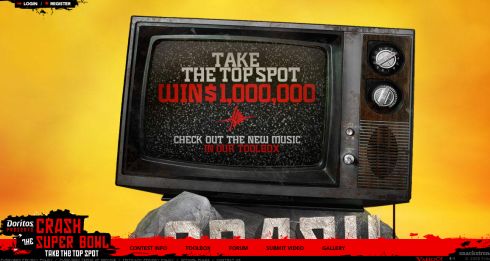von Roland Hachmann | Feb. 14, 2010 | Ad News, Blog
The Superbowl has yet again been a large show off for TV ads. Even though some argue that the quality of ads has been lower than the previous years, one thing stuck out again: the spots not produced by a typical „Madison Avenue Agency“. Two Doritos spots, allegedly created by consumers, a Google ad produced internally,
NY Times hence wrote an article with the catchy title „Do-it-yourself super ads„, subtitle: „be afraid, Madison Avenue. Very afraid“. The article mentions the user generated spots and their „ranking“ on hulu.com and twitter, deducting that consumer know best what consumers want to see.
Well, that’s only one part of the story. And shall we say: the badly researched part of the story.
AdLab busts that story by stating a few facts that the NY Times should, in fact, have researched.
The first Doritos spot „Underdog“ was created by Joshua Svoboda a 24 year old, who works as a creative director. The second spot „House Rules“ was created by a writer/director from Hollywood.
Even the other Doritos commercials from the previous years plus other „UGC“ clips were apparently created by people already working in film related businesses, states the above mentioned article.
So it wasn’t brand fans or advocates who put in their efforts to create a brand message for the brand they like. It was creative people, producers, writers, who were probably more interested in promoting their own „brand“ through the PR associated with the clip.
It’s not really that surprising. However, the fact that this has not been picked up by the media correctly is suprising. In a way, I also fell for what might be the reason for the whole ignorance: the story of consumers creating ads with only a few hundred Dollars production costs, that are shown during the Superbowl with a mediabudget of more than $2.5 million, reaching more than 100 million viewers – it’s too good.
I work in an ad agency, so I shouldn’t like the idea of consumer generated ads. Yet due to my interest in social media marketing I did in fact like the idea. (And with everything connected to the setup of the contest, there would still be enough scope for agency work…) So it is rather disappointing to find out about the truth behind these famous examples.
von Roland Hachmann | Nov. 8, 2008 | Ad News, Blog, Digital Marketing
Doritos engages its target audience once again to produce TVCs for the superbowl. Their shoutout is „take down the ad pros“ / „take the top spot“.
Make it to one of the five finalists and winn $25,000. When voted as the favourite, your ad will get aired during the superbowl. An dif the ad gets to the top spot of the US Today Ad Meter, you win 1,000,000
You can think of any story you like, and should submit a video of not more than 30 secs. In the gallery, there are already 218 spots by now.
On the site, they even provide you with a library of Doritos material, such as product shots, music files and animated logo sequences usually used for the end of a spot by the ad pros. But the story items still need to be shot by the target audience.
While I always liked the idea of consumer generated content, it is stilla cheap means of cutting production costs – in this case to a possible max of $125kfor the finalists plus an undisclosed amount for whoever produced the site and manages the campaign. The 1 million will only be paid out if the spot makes it to number one of the US Today Ad Meter. I don’t know what the chances are in that, but I do know that advertisers can buy insurances for these kind of „risks“. So that the actual sum paid for the insurance premium that pays, in case the 1 million needs to be paid out, can by substantially lower.

(via ad rants)
von Roland Hachmann | Feb. 6, 2008 | Blog, Digital Culture, Social Media Marketing
Seeing this, reading how Jeremiah and Josh tracked Superbowl ads and thinking back to this tool here, I expect a huge twitter boom during the forthcoming US election. Lets just hope that twitter gets their server capacities up to speed. It will be interesting to see how this new communication mechanism will evolve!
von Roland Hachmann | Jan. 31, 2007 | Ad News, Blog, Marketing
Interestingly enough, many super-advertisers skip this years super-bowl. P&G, Unilever, Microsoft all won’t show a single ad during the game.
There are some noteworthy quotes in that article:
A quote of John B. Williams, general manager-Windows global communications
We think we have a product and a message that stands alone. Borrowed interest is always something you look at, but [our marketing] will give us more pop, in our opinion, than going into a Super Bowl environment.
A P&G spokesperson stated via email:
Simply put, we’re looking to optimize the intro of the new campaign, and the Super Bowl was not part of the strategy
Seems like the main advertising sports event had reached its peak last year and is now on the decline. At least as long as they don’t change something about the setup – i.e. prices, integration with other media/events/channels, whatever. Does that mean advertisers will shift more to online? Not necessarily so. Dove experienced good results with outdoor last year and expects more resonation of the academy awards.
In the end it shows that currently everything is under close scrutiny, even events like the superbowl…


 Wo ich sonst so bin...
Wo ich sonst so bin...